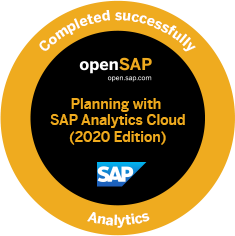Currency Translation - Dimension Properties
| Dimension Type | Important Currency-Related Requirements |
| Entity | The required property is CURRENCY, which stores the local currency of the entity. The property FX_TYPE allows you to filter the business rules depending on this property (the FX_TYPE property value must be typed into the business rule in sp5). |
| Group | The required properties are as follows: |
| Group | CURRENCY_TYPE whose values are G for group currency or N for non-group currency |
| Group | GROUP_CURRENCY whose values are the group currency(s) such as USD |
| Category | This same category dimension must also be used in the rate model. The properties R AT E_C AT EG 0 R Y, RATE_YEAR, and RATE_PERIOD can be used to select the rate from a different category and time combination. |
| Currency | The required properties are as follows: |
| Currency | REPORTING whose values are Y or blank |
| Currency | CURRENCY_TYPE whose values are T for transaction currency, R for Reporting, and L for local currency. |
| Currency | MULT_DIV is used to determine whether Direct or Indirect exchange rates are being stored. M (multiply) is used for direct rates and D (divide) is used for indirect rates. |
| Account | • RATETYPE assigns the account to a currency translation rule. |
| Flow | • FLOWTYPE - the member with the CLOSING property is used when the FORCE_CLOSING option is selected in the currency translation rules. |
| Time | YEAR with values like 2011, 2012 |
| Time | PERIOD with values like JUN, JUL |
| Time | TIMEID with values like 201206, 201207 |
| Time | MONTHNUM with values like 6, 7 |
| Audit | DATASRCJTYPE whose values are / - Input, M - Manual Adjustment, A - Eliminations and Adjustments |
| Audit |
IS_CONVERTED whose values include N - these members are ignored in the conversion; Y (or blank) - these members are converted from LC into the desired currency: and G - these members are entered in a reporting currency and are translated to group currency.
|
Currency Translation Rules
| Set of accounts | Set of flows | Translation methods |
|
Balance sheet accounts (excluding Investments and Equity)
|
Opening | The opening balance is translated using the closing rate of the previous year. |
| Movements | The movements of the period are translated using the average rate. | |
| Ending | The ending balance is translated using the ending rate. | |
| Currency Difference | The currency difference is recorded on a CTA flow on the original account or CTA flow and CTA account. | |
|
Investments and Equity account
|
Opening | The opening balance remains unchanged from the previous year. |
| Movements | The movements of the period are translated using the average rate. | |
| Ending | The ending balance (historical) is the sum of the opening balance and the movements. | |
| Currency Difference | The currency difference is recorded in a specific account in the retained earnings. | |
| Profit and Loss accounts | Ending | Translation using the average rate. |
Currency Translation Process:
- For a given record, the source currency is determined by the CURRENCY property of the entity.
- The destination currency is determined by the user selection, or by the GROUP_CURRENCY property of the selected group.
- The currency translation rule is determined based on the RATETYPE property of the account, and the flow of the source record.
- Based on the selected currency translation rules, the system determines the logic to apply and the exchange rates from the rate model to use.
- The system calculates the target currency values and creates the appropriate records in the consolidation InfoProvider.

